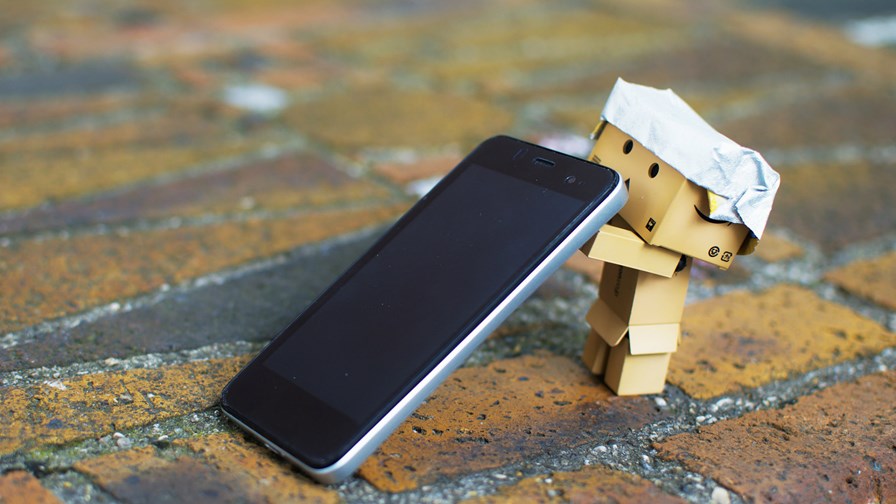
via Flickr © Leonidas-from-XIV (CC BY-SA 2.0)
- After more than 30 years the arguments over the dangers that wireless radiation might cause to cellphone users continue to rumble on.
- Research, investigations, reports, conclusions and advice differ according to where they are conducted and issued.
- Confusion all the greater because national health agency policies are confused and contradictory.
- US regulator's stance based on practically prehistoric mobile phone usage statistics.
It's 2016 - a barely-tarnished and almost brand-new year, and yet one of the first reports to arrive on the desks of the editorial team here at TelecomTV harks back to a venerable scare-story that has been doing the rounds for many a year now and, somehow, still staggers on into the second half of the second decade of the 21st century. Can you guess what it is yet?
No? Well, it's that perennial and hoary old chestnut "Does wireless radiation from cellphones cause brain cancer in humans?" Heaven knows how many investigations there have been into this subject since the 1980s but it long since became a money-spinning global mini-industry in its own right. First one piece of expensive research concludes that mobile phones "definitely" are "potentially" dangerous to health, then another, countervailing but equally costly, examination reports that they are safe and don't cause disease in humans no matter how much they are used.
And so, to kick off 2016, the New York Times newspaper has analysed more than 500 pages of internal records obtained from the leading national public health institute of the US. The Center for Disease Control and Prevention (CDC) is a federal agency with the remit to protect public health and safety through the control and prevention of disease, injury, and disability.
In that regard the CDC has investigated wireless radiation from cellphones and issued authoritative mobile phone usage guidelines. Back in the summer of 2014 the agency concluded that cellphone radiation could indeed cause cancers and advised the adult population should exercise caution "in cellphone use" and specifically warned that children may well be at particular risk.
The CDC's approach and conclusion was based on three years of scientific investigation and was in diametric opposition to to agency's previous position which had been that risks from cellphone RF "are comparable to other lifestyle choices we make every day" and, in any event, much less pernicious and dangerous than the all-too-common practice of texting whilst driving.
So, that was one about-face: Radiation from cellphones can be injurious to human health, after all. But then came another 180 degree pirouette. The New York Times investigation shows that factional debate and argument between CDC officials and scientists, based on the greatly different attitudes and recommendations as to the potential threat of cellphone radiation on the part of other agencies in other parts of the world, caused some to row-back sharply on their support of the explicit warnings issued to US citizens, even as concerns grew and and individual states began to question the advisability of permitting cellphones and wifi access in schools and colleges.
The result of the internal arguments was that the CDC quietly and unobtrusively changed its guidelines back to what they had been prior to those issued in 2014 and averred that they had never actually been intended as new official CDC policy in the first place.
Meanwhile, the US regulator, the Federal Communications Commission (FCC), maintains its long-held view that "radio-frequency energy is not effectively linked with any known health problems”. However, that position is based on cellphone usage that pertained a decade and more ago when the median rate was just 2.5 hours per subscriber per MONTH! More up-to-date figures contained in a comprehensive and much more recent Nielsen survey show that in 2014 the average American was using cellphones for more than 34 hours a month - and it is highly likely that usage has increased yet again over the intervening period to today.
The inconsistencies in the published results of research, investigations and the official policies and advice to the public that has followed them are marked and significant. Mobile telephony is a global phenomenon and industry but individual nations (and interest groups) have conducted their own investigations into the alleged and perceived dangers of handset radiation and have come to different conclusions and issued different guidelines. The disparities are as evident as the lack of an accepted international approach to the issue - and, in many cases, have also been affected by massive lobbying on the part of vested interests such as manufacturers and operators.
Indeed, the European Environment Agency, (EEA), goes so far as to caution that, “scientific opinion is split on the issue and many different studies have reached different conclusions based on the same evidence". Thus, it advises, “a precautionary approach to policy making in this area.”
And so the stage is set for another generation of argument and counter-argument, posturing, pomposity, preferment, in-your-face scare-mongering and bland and blithe reassurance that all is well. No change there then. Welcome to 2016. Just like 1986 but with added terrorism.
Email Newsletters
Sign up to receive TelecomTV's top news and videos, plus exclusive subscriber-only content direct to your inbox.




